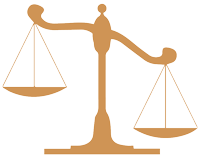A mass tort is a lawsuit in which a group of plaintiffs join their cases with those of numerous other people who have been harmed by the same defendant. When a drug maker provides a pharmaceutical with hazardous side effects, for example, everyone who is injured because of that drug can typically be reimbursed. The level of control a plaintiff has over the case is the main distinction between these two types of litigation. Traditional injury claims, in which each plaintiff is evaluated as an individual, are more like mass torts. Class actions are usually larger than mass torts and involve a higher number of claimants.
Four of the biggest and most common causes that have inspired action:
- Defective Medical Device Torts.
- Defective Product Torts.
- Pharmaceutical Torts.
- Toxic Torts.
The main differences between the two are that mass tort cases do not require legal certification like class actions do, and plaintiffs are treated as individuals while being part of a collective. The vast majority of mass tort lawsuits fit into one of many cause-specific categories. The following are four of the most important and well-known reasons that have sparked action. Defective Medical Device Torts, A mass tort case can and does arise when a medical item is proven to be defective in a way that causes injury or harm, with all aggrieved individuals having the opportunity to join. In recent years, major incidents have included faulty hip replacements and transvaginal mesh. Defective Product Torts, any circumstance in which several consumers purchased a defective product that resulted in an injury is covered by this form of mass tort. Defective airbags (such as the Takata products) or easily detachable children’s toys that pose a choking hazard are common examples. Defective product torts encompass one of the broadest spectrums of possible events and cases. Pharmaceutical Torts, Pharmaceutical corporations have been accused of disseminating drugs with unanticipated but extremely hazardous side effects. A mass pharmaceutical tort case may arise when a medicine injures or even kills multiple people who take it. Toxic Torts, when many persons are exposed to harmful toxins or substances, toxic tort cases arise. Exposure to asbestos or mold, disease induced by lead paint chipping, chemical waste contamination of soil or groundwater, and air contamination by toxic gases are all common examples.
Although both class actions and mass torts include large groups of plaintiffs suing a common group of defendants for harm, mass torts are most commonly brought when customers are hurt by pharmaceuticals, medical equipment, or other products that can cause a wide range of injuries. The great majority of mass tort lawsuits are resolved without going to court. Mass tort plaintiffs are rarely made up of a single group of people. Nonetheless, because multiple plaintiffs have product liability claims against the same defendant in both mass torts and class actions, it is conceivable to consolidate these claims into a single legal action rather than filing numerous individual lawsuits. One of the most significant differences between a mass tort and a class action lawsuit is that in mass tort litigation, each claimant is considered an individual, despite the fact that he or she is part of a big group. This means that each claimant must show that he or she incurred personal injury through evidence such as medical records. The purpose of a mass tort, like a class action or an individual case, is to persuade the court that the product was defective and that the defect caused the plaintiff’s bodily pain, emotional distress, and/or financial loss. Claimants in a class action lawsuit, on the other hand, are represented as a single entity, which means they are all treated as one plaintiff and do not have to prove their claims individually. In the lawsuit, one claimant is designated as the lead plaintiff or class representative. Because mass torts deviate from traditional legal practice, they necessitate a deeper understanding of product liability law, which is why you should seek counsel from an experienced attorney like at The Welsh Law firm in Houston, Texas.
Mass Tort Lawyer Houston, TX
A mass tort is a legal term that refers to wrongful conduct that affects a large number of persons. Individual lawsuits are filed by those individuals, which the Judicial Panel on Multidistrict Litigation (JPML) eventually consolidates into a single court for treatment in an MDL. The panel, which consists of seven members, is appointed by the Chief Justice of the United States Supreme Court. If the panel decides that a collection of federal civil cases from throughout the country should be consolidated into a single case, the cases are transferred from the courts where they were originally filed to a single federal district court. Cases filed after the MDL’s creation can also be transferred at a later date. Plaintiffs benefit from MDLs because all the attorneys engaged can pool their combined expertise and experience, as well as their financial resources, to better advocate for their clients. MDLs benefit defendants as well because it is often less expensive for a corporation to litigate all its claims resulting from the same scenario in a single forum rather than in multiple venues across the country.
